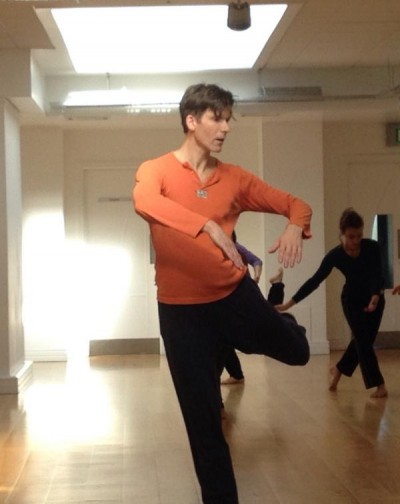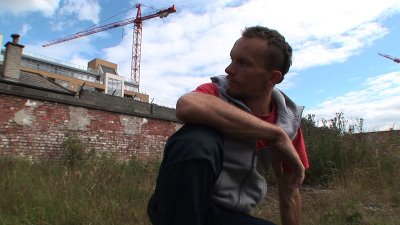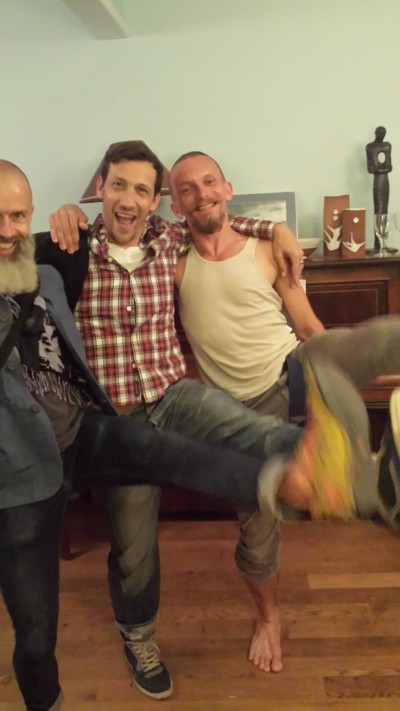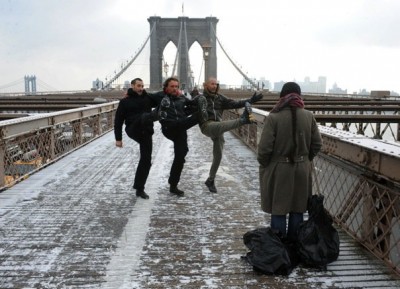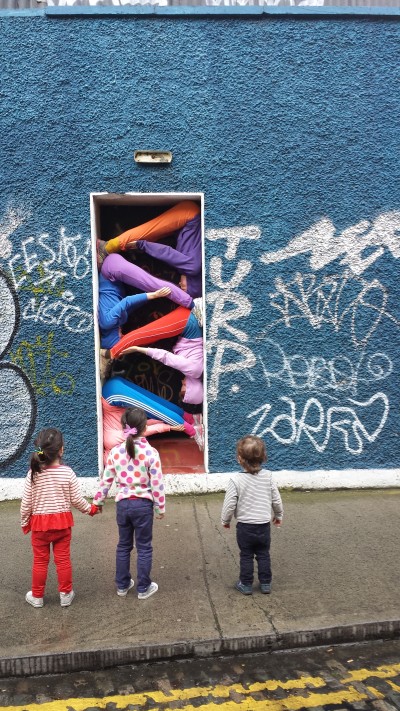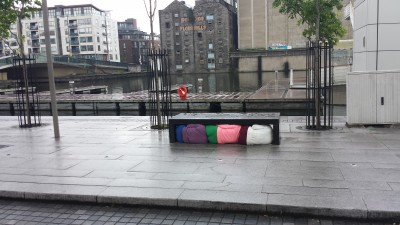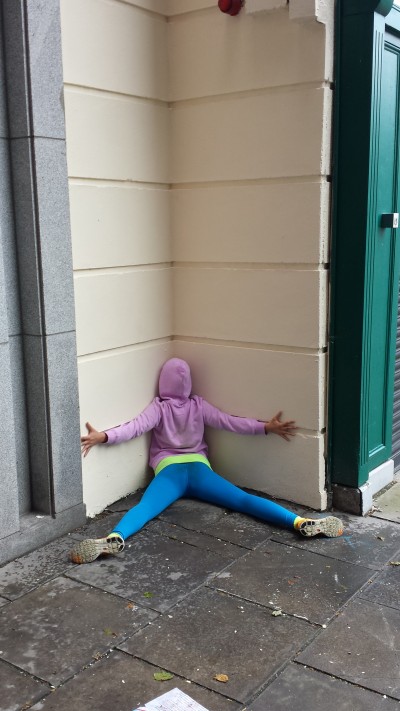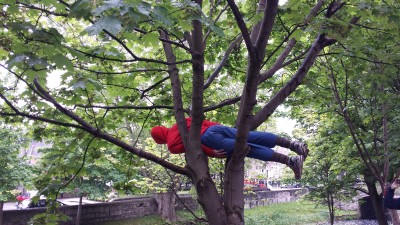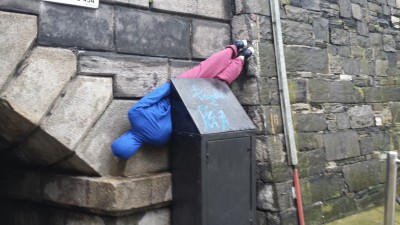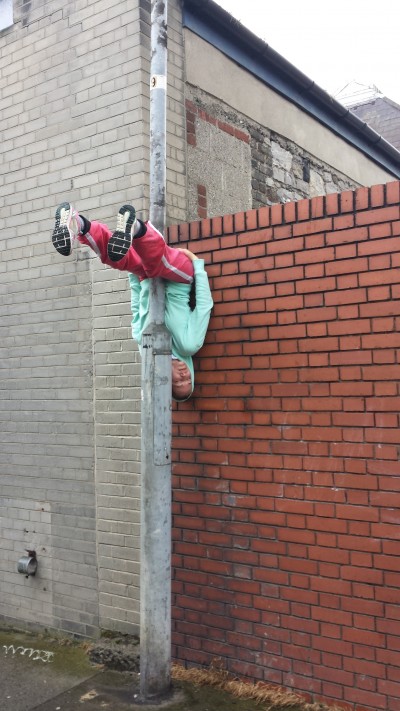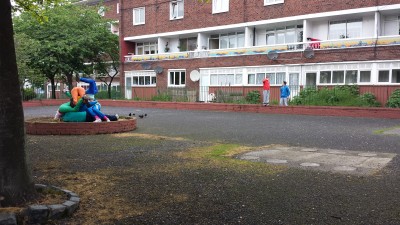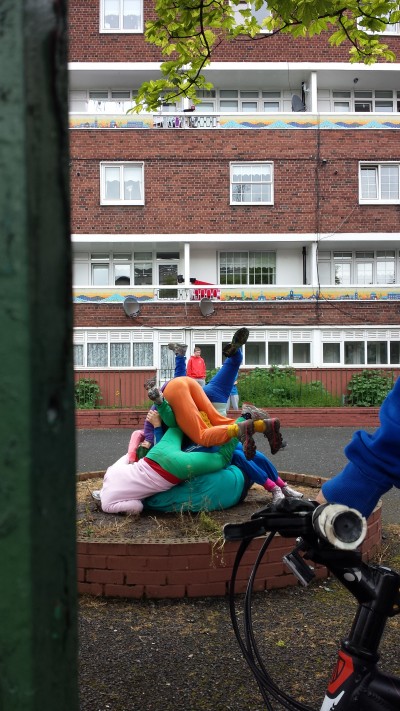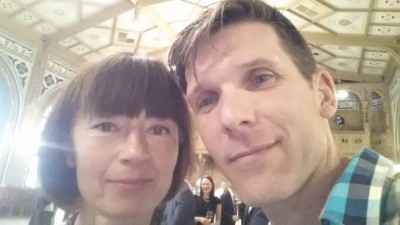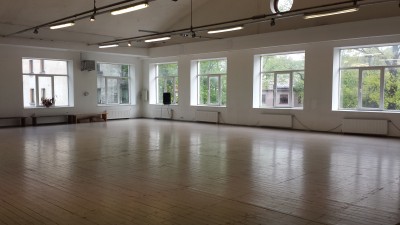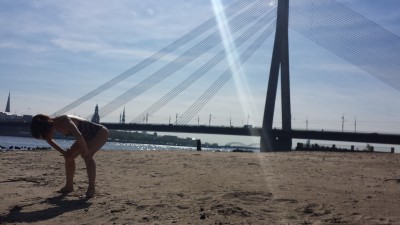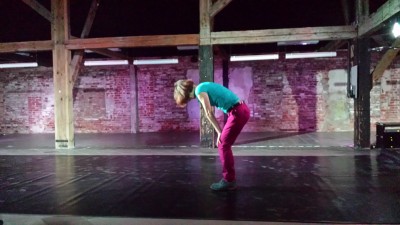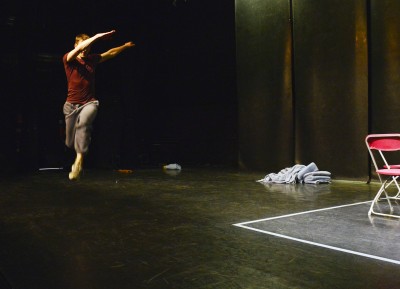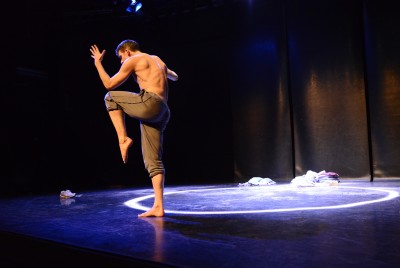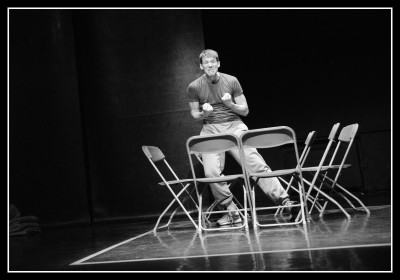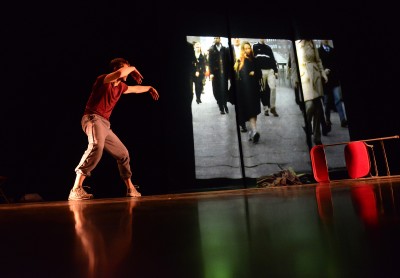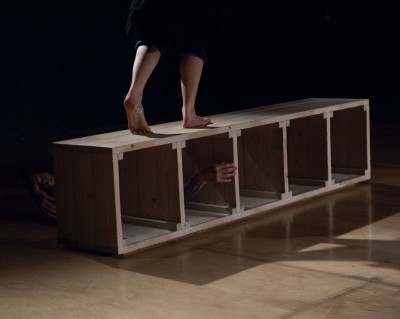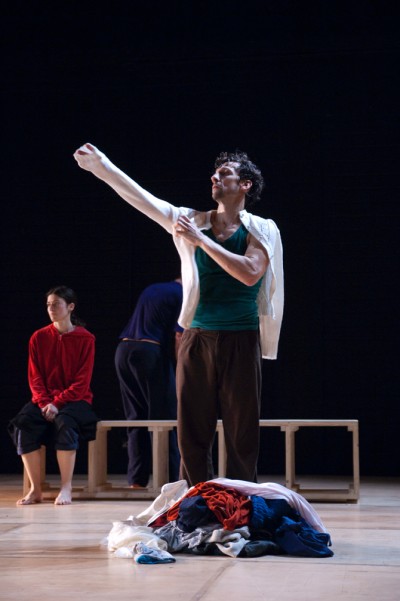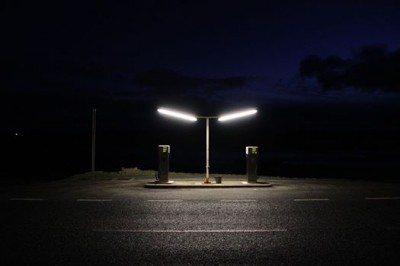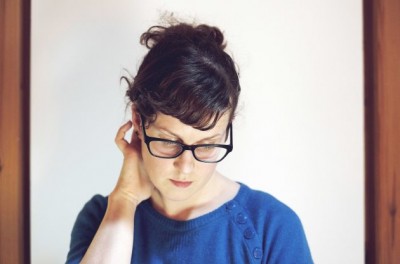As part of their residency in the county, Jamzin Chiodi and Alex Iseli have been running the Tipperary Dance Platform for the past 5 years. TDP’14, to which they invited me this year as a mentor, includes a week’s laboratory and mentoring for emerging dance artists, as well as performances, work-in-progress sharings, and classes that are open to all. This year, the performances included an exceptional duet, Embrace, by French-based Affari Esteri, a sean-nós dance class with the legendary Roy Galvin and selection of dance films. A particular pleasure for me was taking classes with Edmond Russo and Helene Cathala, dancing alongside a young generation of dancers in Ireland and also learning through Helene repertory material from a Cunninghamesque Bagouet, Trisha Brown, Liz Roche and Helene herself. It was a privilege to have her embodied knowledge of those different traditions of dance-making offered to us so clearly and articulately, and to feel that knowledge call to some of the traditions that are part of my own embodiment.
Participation in the platform was free, as was attendance at most the events. Yet for the most part, the public events at the Excel were attended by the dance community of Irish and international artists who were participating this year or who had participated in previous years. Notable by their absence from the performances was a public beyond the profession and its intimates.
The topic for discussion at the Saturday afternoon public forum was l’intime – the intimate space. The choice of this topic was prompted by a feeling that Alex and Jazmin expressed about the challenges of staying true to the validity of their intimate/personal artistic preoccupations while wanting to share that experience with a wider public.
In how Alex described l’intime there was a strong sense of a space that existed just around his body, close to it but also boundaried. Discussing how we might translate l’intime in to English, I realised that it was different from ‘intimacy’, since that term in English already implies a relationship with an intimate person that l’intime does not yet include. It struck me that thinking about how to reach beyond a boundaried personal space like l’intime is already made difficult by the fact that one has drawn this boundary.
In my presentation to the forum, I proposed that we recognise the intimate space as already made by external influences. Psychoanalysis suggests that the most intimate psychic urges are shaped by the family relations of the child. Marxism suggests our relationships are governed by the forces of capital. Foucault proposes that how we experience and understand our ‘selves’ is shaped by power relations in which we participate. The ‘external’ world is already ‘inside’. For some, this is a depressing thought, as it seems to lead to a situation where we have no individual agency. However, an alternative way of looking at it is to recognise that if the world is already ‘inside’ individuals, already in their intimate space, then working on that intimate space is already an engagement with the world. It is not then a question of artists needing to justify or get over their focus on the personal to reach to a wider public ‘beyond’. It is rather a recognition that in having the courage to take as their material the intimate experiences of their lives, in confronting in that intimate space the many external forces that shape the personal, and in working through the conflicts and lack of resolution between those forces, dance artists can re-imagine and embody possible outcomes for how those forces operate.
As Hélène Cathala observed that sharing the space of intimacy is about risk. It’s not just about cosy familiarity. Apparently the root of ‘intimate’ contains the Latin ‘timere’, to fear, so that intimacy is about being able to be in a place of fear with another. This fear gives a charge to l’intime that Helene also reminded us was often connected to sex. For the dance artist to work with l’intime therefore is to work not with a boundaried, reliable personal identity, but to work with an individual experience of the an identity under construction, dissolution and re-construction at the nexus of multiple ‘external’ forces that are also being transformed by this individual working out.
Shadowing all of this discussion in Tipperary was a question about solidarity, a question of particular relevance to dance artists like Alex and Jazmin who work in a context where their skills and knowledge are unfamiliar to most people. How do they maintain the energy to undertake the risky artistic enquiry that motivates them? How do they do it when they have a sense that their context is foreign for them and they for it? (Alex mentioned that one of the reasons that I’d been invited on the panel is that I, along with Dylan Quinn, would have an ‘Irish’ perspective on l’intime that he expected to be different to the ‘Mediterranean‘ perspective that he, Jazmin, Helene, Edmond and Shlomi would have) I was struck by Dylan’s observation in the forum that at the time he was returning to set up his dance practice in Enniskillen he thought the hardest thing about doing so would be the lack of financial resources. However, what has proven to be most difficult is that fact that there are so few people (not even artists of other disciplines) that understand what he wants to do in dance and instead ask him about Zumba classes and wedding dances. For pragmatic reasons –primarily to support his family– he now gives those Zumba classes and teaches wedding dances and he is proud that he can bring dance experiences to four generations in his community of place, from toddlers to the elderly. But it is not a community that, for the most part, understands his artistic practice.
As Jazmin expressed her happiness that the forum provided her with an opportunity to share her thoughts and concerns about this topic, It occurred to me that in a context where the particular support of an artistic community isn’t available, what Alex and Jazmin are doing in the Tipperary Dance Platform is to curate their own community of support. It is a generous curation, making opportunities for dance enthusiasts, audiences, and professionals at different stages of their careers from Ireland and abroad. It is an act of community building that relies on their hard-work, sustained discipline, creativity, resilience and a network of personal and professional relationships. It does also need funding and infrastructure, even if the actual money is in no way commensurate to the work they and their network put in to making the platform happen
[ca

